Edward Gorey’s beloved New York City Ballet is once again performing George Balanchine’s famous production of The Nutcracker for live audiences. To celebrate, we would like to share these memories and reflections of Mr. Gorey as a member of those audiences by his close friend, the dance writer Robert Greskovic. Mr. Greskovic writes about dance for The Wall Street Journal and other publications. He is the author of Ballet 101, which, in its current Limelight edition, has an Edward Gorey sketch for the cover design. He lives in New York City, where he met Mr. Gorey in 1970.
By Robert Greskovic
For successive Decembers from the 1970s into the mid-1980s, knowing Edward Gorey in New York City as I happily did, meant, in part, knowing him at New York City Ballet for The Nutcracker, George Balanchine’s two-act ballet to Tschaikovsky’s famous and famously moving score from 1892. Ted, as some of us knew him, is widely remembered as a NYCB-follower and devotee, to perhaps put it mildly. I met Ted at NYCB performances during 1970 not long after I saw my first performances of Balanchine’s Nutcracker. For short, Ted lovingly referred to Balanchine’s ballet based on E.T.A. Hoffmann’s 1816 tale, “The Nutcracker and the Mouseking,” simply as Nuts.
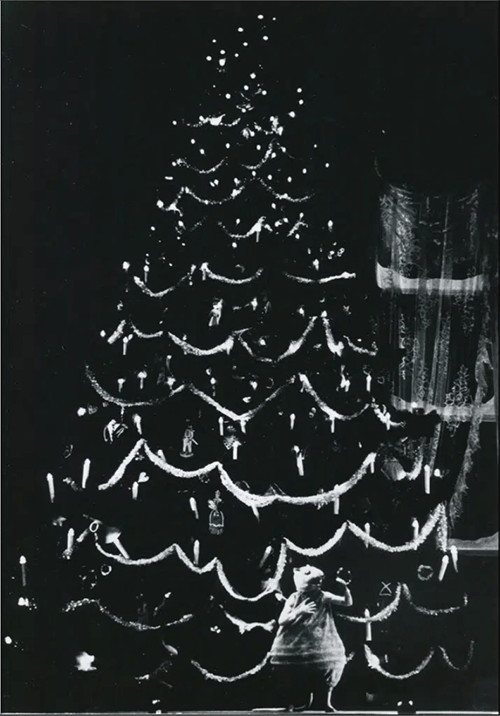
I was so taken with this now classic Balanchine work, with its scenic designs and effects dating from 1964 by Rouben Ter-Arutunian, as it was given at a matinee on Sunday, January 11th, when I saw it for the first time, that I hurried down from my standing room place at the back of the New York State Theater’s fourth ring, its topmost level, to the lobby to buy another standing room ticket for the evening. Though I don’t recall registering on this, it’s very likely that I passed Ted, who was not then known to me, as he sat during NYCB intermissions on one of the theater left benches on the auditorium’s promenade level. As the programs I still have from that day note, the leading dancers in the evening performance, the last Nutcracker of that season, were Patricia McBride and Edward Villella as the Sugar Plum Fairy and her Cavalier, respectively. As I would eventually learn, “Miss McBride” or “Patty,” as Ted alternately called the NYCB principal dancer, ranked high in the pantheon of NYCB ballerinas during his approximately three-decade long familiarity with the company.

With regard to Ted’s NYCB-going habits, which have been frequently noted in writings about him telling how he never missed a performance, this view of his attendance at “the company,” as he frequently called the troupe, while not exaggerated, isn’t precisely true. After moving to NYC in 1953, Ted eventually became unfailingly enthusiastic about Balanchine and his work and his dancers. In 1966, the company, which was, since ’64, the resident troupe of the State Theater, began a mail-order subscription series, which meant buying certain groups of performances in advance of the season’s opening. Ted decided to purchase every subscription on offer, and then would fill in any performances not part of any subscription; he called this “non-sub” performances, for which he’d buy single tickets at the box office. So far, so good, for the “every performance” pattern of Ted’s NYCB attendance. The Nutcracker, however, was not part of the company’s subscription series, as the ballet was so popular it would readily sell on its own. (Subscription pricing gave the buyer a group-rate discount that the company didn’t need to offer for the increasingly famous Nutcracker that would sell-out as a matter of course.) My hunch, and I never actually debriefed Ted on this, is that he bought as many or as few Nutcracker performances as he chose during a given season, guided no doubt by the dancers cast in prominent roles.
This said, there was one particular year, my guess would be 1979 for NYCB’s 71st New York season, when Ted decided on something of a whim to attend the full Nutcracker run, which he must have known would have made him seem this side of mad to any number of ballet-goers for whom Nutcracker was more a holiday diversion than a “serious” ballet. (My saved programs from that year tell me that I saw the ballet that season 14 times, which means I likely did so to keep up in part with Ted’s “Nutcracker marathon,” some 30+ performances in a row, except for Mondays when the theater was dark, but with matinees along the way making for two performances on such days.) The final performance that year was on New Year’s Eve which was then a tradition that Ted especially enjoyed as the company would tweak the ballet with various inside jokes to which Ted looked eagerly forward as they were, in his sometime phrase, “good for a giggle.” For example, the “Marzipan Shepherdesses” might alter their choreography by adding steps from another Balanchine repertory work, say, Concerto Barocco. Or, the ballet’s conductor, Robert Irving, with whom Ted was friendly, would enter the pit for the ballet’s second act wearing the ass’s head from Balanchine’s A Midsummer Night’s Dream.
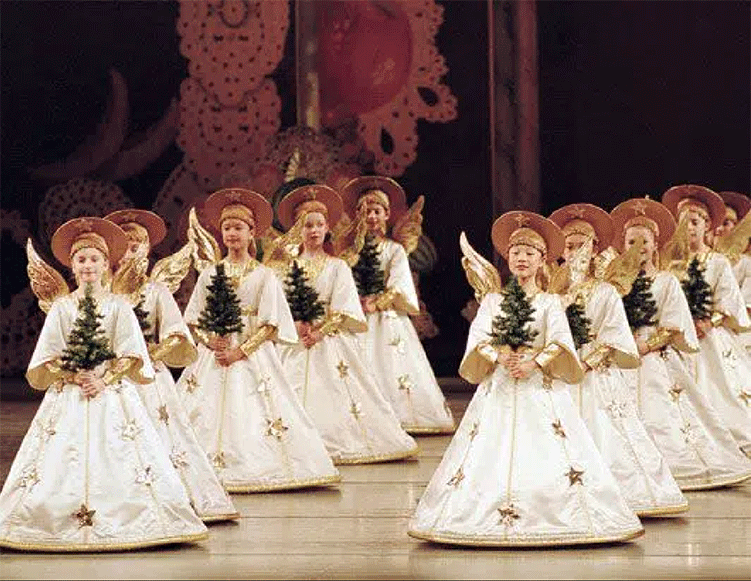
One aspect of Balanchine’s staging of this famous Tschaikovsky ballet that Ted adored was its use of children, actual children, not as is so often done for Nutcracker, adult dancers playing, and all too often over-playing, as juveniles. Ted regularly referred in conversation to the youngsters who Balanchine featured, that is, fresh-faced ballet students from NYCB’s affiliate dance academy, The School of American Ballet, as “the tinies.” Gorey followers regularly single out one of Ted’s best known works, The Gashlycrumb Tinies, as indicative of his “weirdness” and “macabre bent” in that the tinies in this work all meet an untimely end. OK, they do, but it doesn’t follow that Ted had a distaste for or ill will toward children. As he once remarked with regard to being pegged macabre in particular reference to his Gashlycrumb story: “I realize some of it is macabre but I think most people have a more simplified idea of it than I do” (Mitchell Landsberg, “Illustrator is gaining wide appeal,” The Hartford Courant, Sunday, March 8, 1987). Ted’s enthusiasm for Balanchine’s Nutcracker, in particular its use and presentation of child dancers, is a good example of his warm-hearted fondness for “tinies.” Specifically, he spoke at times to me of Balanchine’s use of little girl students for the gold-winged, halo-crowned ensemble of angels to set the scene for the second act’s “Land of Sweets”. To Tschaikovsky’s entr’acte, with its floating sonorities providing a kind of shimmering surface on which, given Balanchine’s artful use of soft, skittering steps, the smilingly sweet girls appear to hover over the stage in linear formations. The effect is greatly aided by the hooped hems of their flared, star-decorated dresses, which hide their scurrying steps as their moves propel them floating over the stage.
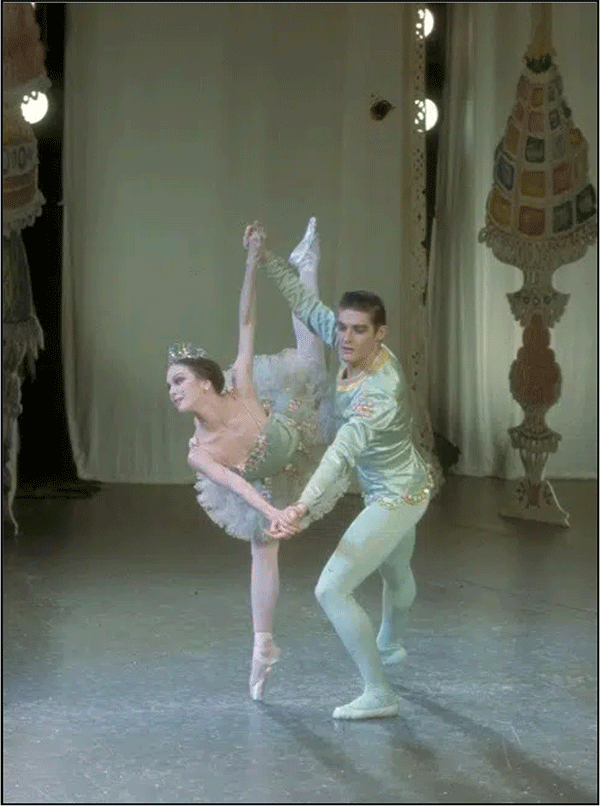
In his admiration for this scene, Ted pointed to it as one of Balanchine’s more inspired revisions of his staging. Early on, when the ballet was performed annually following its 1954 premiere at the City Center for Music and Drama, these angels were danced by older girls as his School of American Ballet didn’t then have a large number of younger girls to draw upon. The initially older students undoubtedly performed the same hovering steps but looked more like teens than tots. Once, however, Balanchine’s school could provide him with smaller girls, he made the change that Ted found so moving a sight. He said that their presence and innocence would regularly bring tears to his eyes, especially as accompanied by Tschaikovsky’s evocative music. Likewise, it was Karinska’s inspired costuming for these tinies, revised from those for the older girls, that so impressed Ted. As Gorey followers know, Ted provided the Foreword for Costumes by Karinska, by Toni Bentley (Harry N. Abrams, Inc., 1995), the definitive book about Karinska’s costume designs.
To be sure, Ted was happily enthralled by the eight-part suite of ballet numbers that make up Nutcracker’s second act, especially if these included any of his favored dancers—in addition to McBride mentioned above, Ted would especially swoon, to use a go-to word of his in such instances, over the performances of Allegra Kent as both the Sugar Plum Fairy and as Dewdrop, leading the act’s swirling “Waltz of the Flowers.” When Kent waved her fairy’s wand as Sugar Plum and directed the string of little angels to follow her and frame the stage for the entrance of the featured dancers, Ted saw her glowing warmth and caressing gestures as if those of a mother hen tending her chicks. (His affectionate nickname for her was “leggy-poos.”)
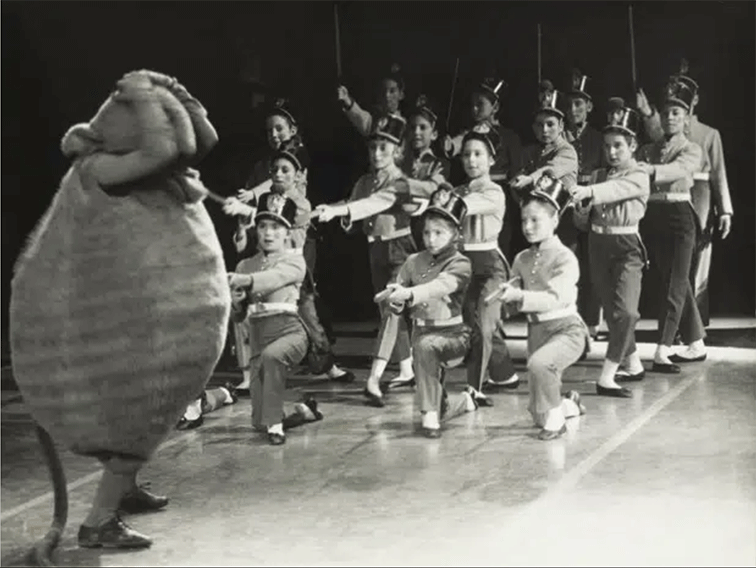
Still, because of the presence of so many children in the first act’s party scene and in the shadow of its impressive growing-tree sequence, Act One may have been Ted’s favorite. Watching, for example, the action’s mice, menacing in many other versions of Nutcracker, but jolly and roly-poly in this production, “carrying on full tilt,” as Ted liked to say, tickled him endlessly. He often spoke of Karinska’s construction of the costuming for the mice: “Like Japanese lanterns,” he suggested regarding their wire frame supporting structures.
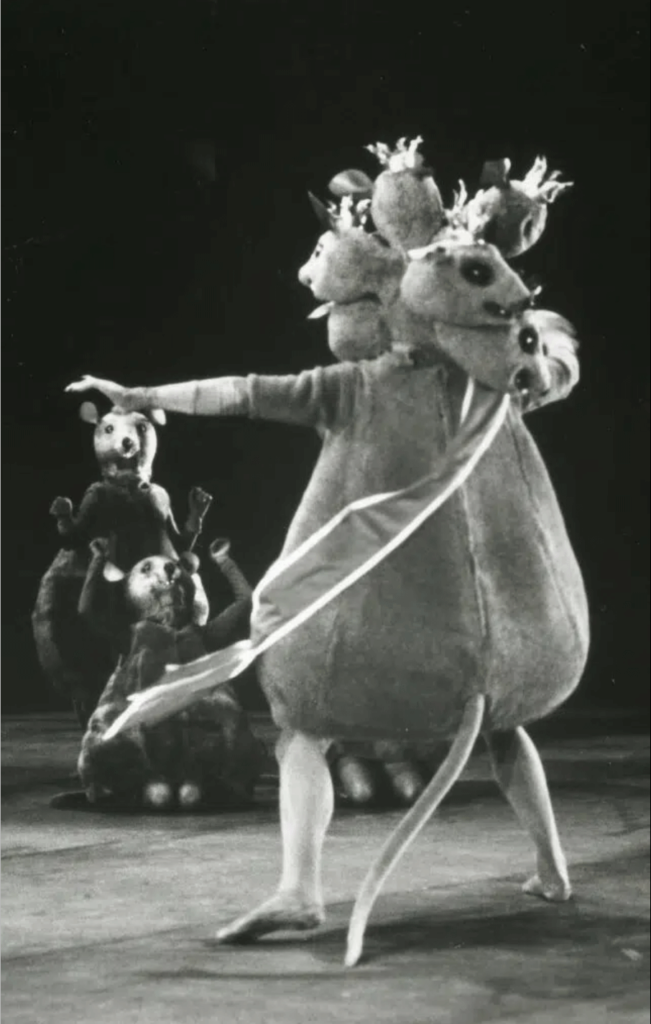
Karinska’s original king had seven somewhat enigmatic heads with bright, glassy eyes, which Ted found far more effective than the one-note unchanging expressions on the toothy heads for the movie. Karinska’s enigmatic heads for him could project any number of emotions, while the Warner Brothers seven-headed king managed but one single expression. As for the tale’s seven-headed Mouse King, who appears at the climax of the battle between the mice and Marie’s toy soldiers, he spoke to me how mistakenly he felt those involved in the 1993 Warner Brothers’ film had chosen to give the seven heads of the king of the mice new, ghoulish, sunken eyes and snarling expressions, baring sharp teeth.
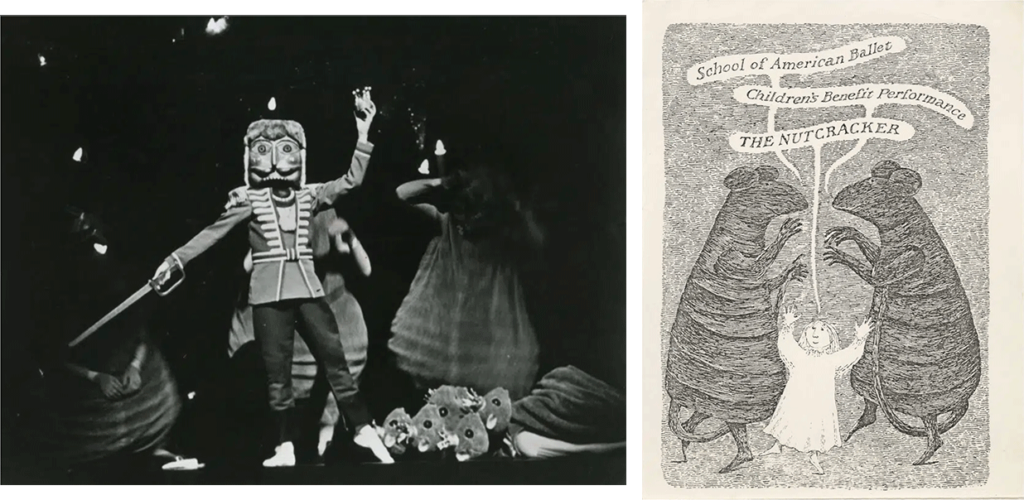
What I suspect to be a little-known Nutcracker work of Ted’s is one he did as a flyer, no doubt gratis, for a School of American Ballet benefit performance of The Nutcracker to support the school’s scholarship fund. The date was Dec. 10, 1983, which came during the first run of performances of Balanchine’s masterwork since his death in April of that year. The illustration is a charmer of a take on a moment from the ballet’s first act where Marie finds herself surrounded by invading mice; it shows a tiny Marie in her night gown, looking as she might in Karinska’s costume for this scene where the Nutcracker character goes to battle for her. As seen in Balanchine’s staging of this episode, brave Marie bops away from her two intruding mice as they attempt to menace her. Karinska’s “Japanese lantern” scheme for the mice is duly rendered in Ted’s line drawing.
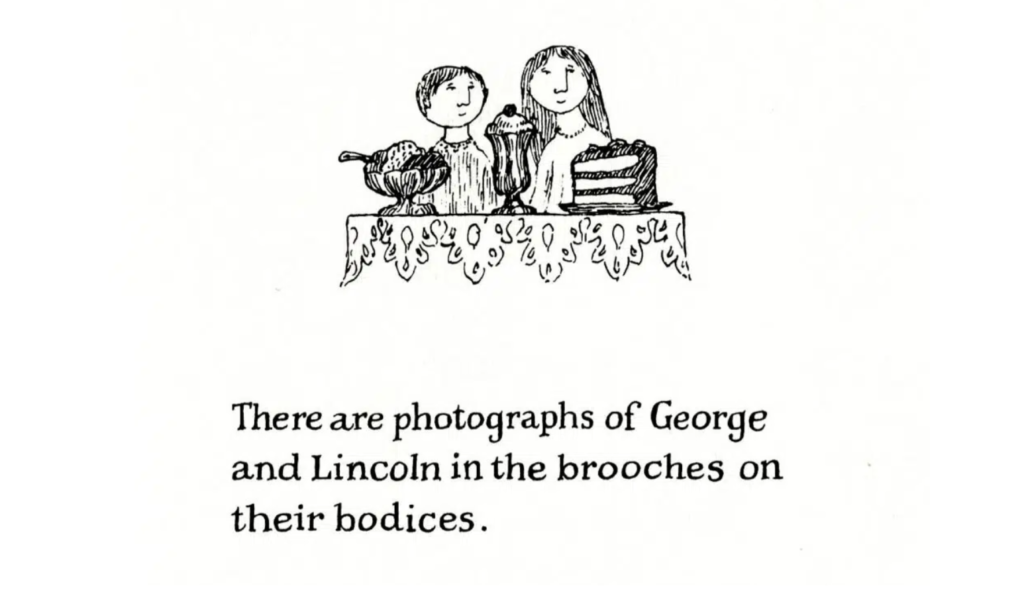

Balanchine’s Nutcracker appears in one plate of The Lavender Leotard, or Going a Lot to the New York City Ballet, Ted’s 1973 series of glimpses into the company’s repertory, originally published in a 1970 Playbill under the title, “Ballethooha.” Ted’s rendering shows the ballet’s lead children, Marie and her little prince, seated at their dessert-filled raised table, as if enthroned, while one of the ballet’s divertissements, out of frame, is being danced for their entertainment. We know from NYCB lore that the number being remarked on by the two children is the “Hot Chocolate” divertissement, a Spanish dance, for which the dancers’ chocolate brown costumes have cameo-style brooches on their bodices. The lead woman’s has a picture of George Balanchine while the four women around her have pictures of Lincoln Kirstein in theirs. (Kirstein was director of the School of American Ballet, and Balanchine’s right-hand as he headed NYCB.) Ted’s 1970 statement helps date the inclusion of the cameo detailing for these costumes, as a photo of “Hot Chocolate” dating the era of the ballet before it was redesigned for the New York State Theater, shows that these brooches were a later addition, though not later than 1970.
Ted much enjoyed the holidays around Christmastime, calling them “the hols,” and when walking around the city often in one of his well-known fur coats, mostly between his apartment on E. 38th Street and Lincoln Center, he’d often mention the dazzle of various Christmas displays, pointing to the special pleasure he took in seeing their fairy lights. Speaking of his coats, from the time I knew him, that is from around 1970, these were mostly made at a 7th Avenue furrier according to his specifications; they included no closures, such as buttons or hooks, as he preferred them to be made with a generous overlap to their fronts so he could hold his coats closed as he walked in the wintry air.
For a succinct focus on Ted and the tinies see the image gracing the back cover of The Gilded Bat (Simon and Schuster, 1966). There you find his book’s heroine as a beginning ballet student, standing in her ballet class with her feet in fifth position and her arms in, more or less, fourth position en haute. Given her gently attentive facial position and her existence in a dark void, the narrative’s little Maudie Splaytoe looks at once fragile and artful and, perhaps, to Ted, eternal.
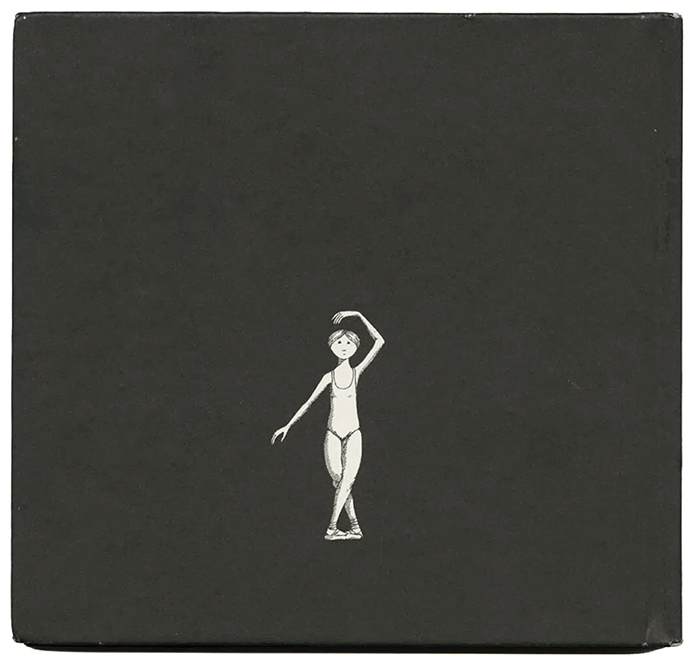
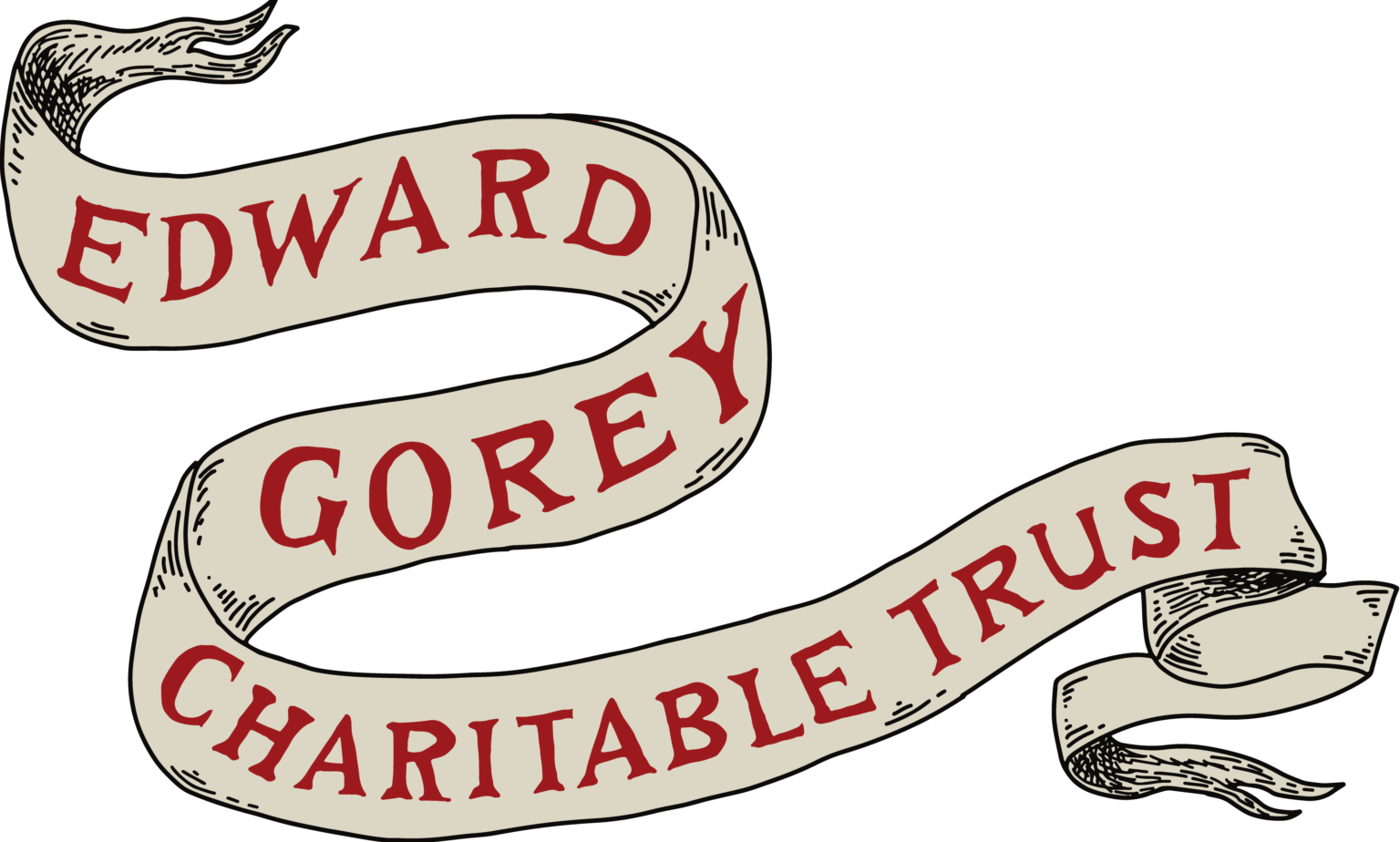

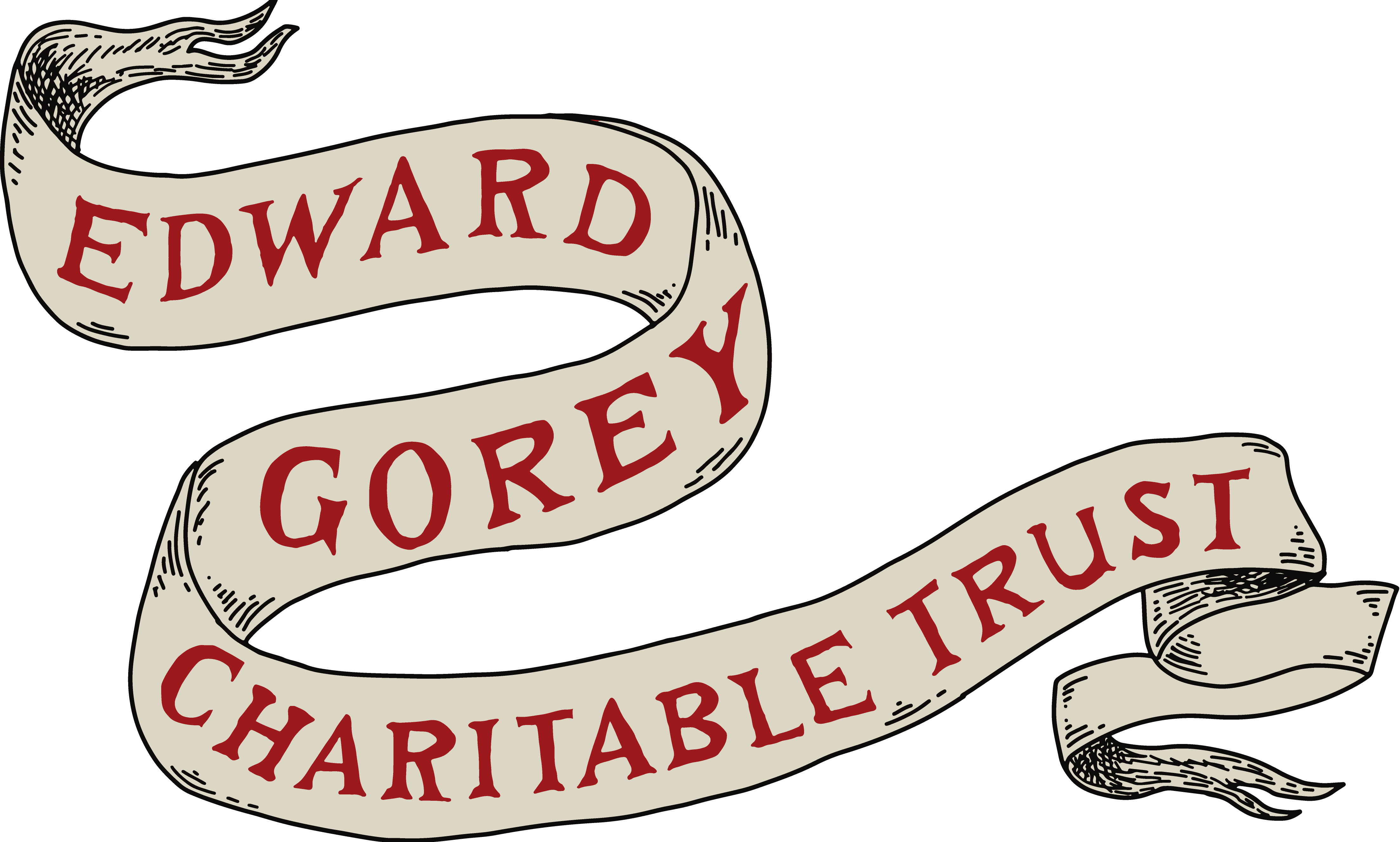
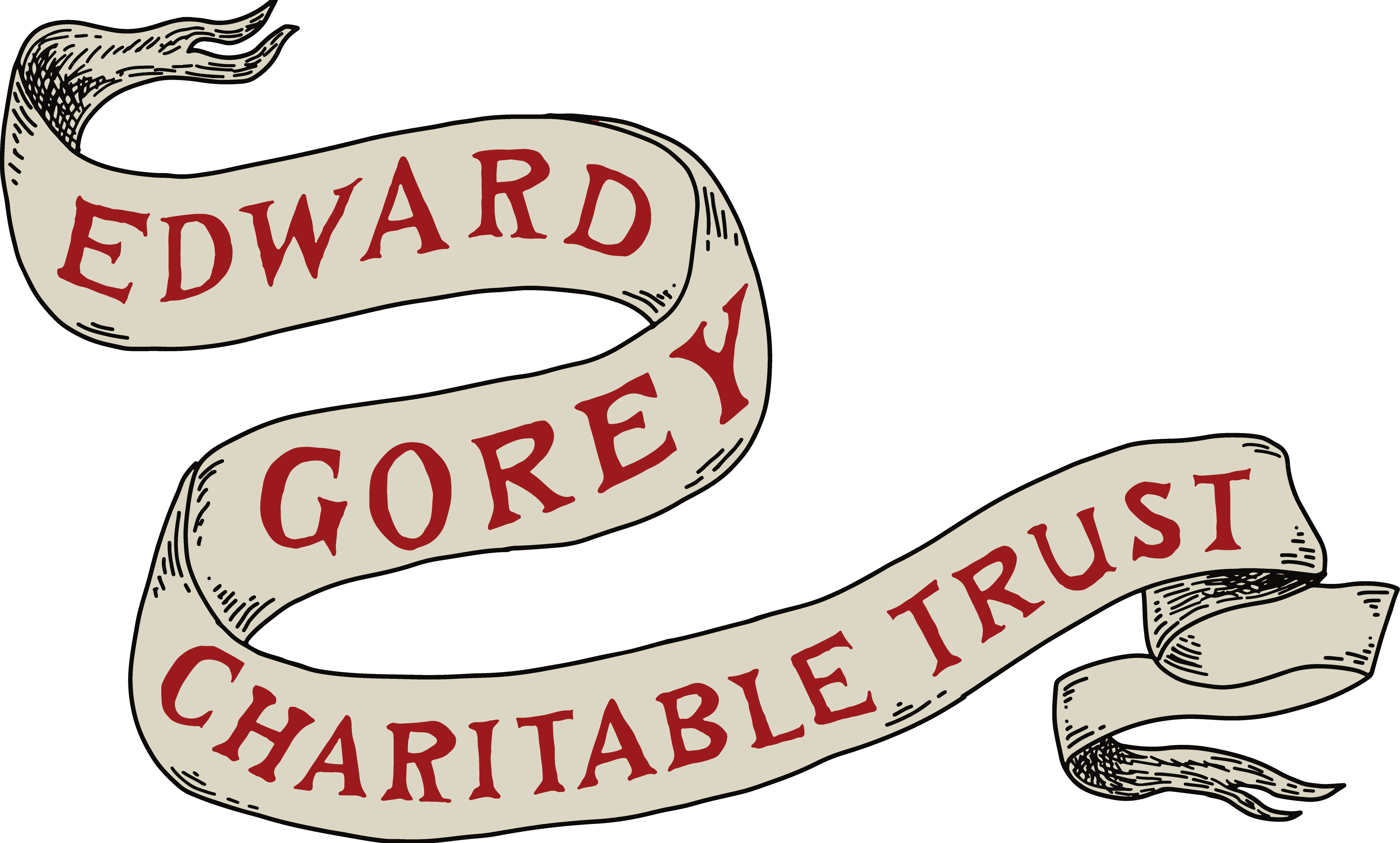
4 Comments
Peter F. Neumeyer
Instructive and nostalgia inducing. How very much he is missed. Thank you. Peter Neumeyer
Malcolm Whyte
Thank you, Robert, for an wonderfully insightful article on Gorey and the NYCB; it many new details, Gorey’s marvelous School of
American Ballet, and charming video of the Balanchine’s “Angels”
— all treasures!
Karen Wilkin
Hello Robert,
Lovely to see this piece. As one of the original angels, I can vouch for none of us being teenagers. There were far fewer of us, we played different golden instruments, and stood at the back of the stage for the entire second act, which meant we got to watch everything — the best part of being in Nutcracker. (That and the free shoes.) I got paid a little extra for putting rouge circles on the soldiers and flattening myself into the almost non-existent wings of City Center to send them out in groups of four, in time with the music, to deal with the mice.
Karen Wilkin
Hello Robert,
Lovely to see this piece. As one of the original angels, I can vouch for none of us being teenagers. There were far fewer of us, we played different golden instruments, and stood at the back of the stage for the entire second act, which meant we got to watch everything — the best part of being in Nutcracker. (That and the free shoes.) I got paid a little extra for putting rouge circles on the soldiers and flattening myself into the almost non-existent wings of City Center to send them out in groups of four, in time with the music, to deal with the mice.